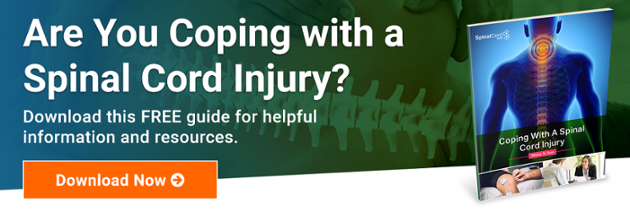The Stages of Cervical Spinal Cord Injury You Need to Know About
Johns Hopkins Medicine reports that the most commonly affected regions of the spine that are affected by spinal cord injuries (SCI) are the cervical and thoracic areas. These sections of the spine are the uppermost levels of the spinal cord, starting at the base of the skull (C1-C7) and spanning down to the mid-back (T1-T12).
When you or someone you love has suffered a cervical spinal cord injury, there is so much information to take in about the injuries and learn about how their lives (and yours) will be impacted. Some of this learning period includes understanding what cervical spinal cord injury treatment options are available and how they break down. This article aims to help spinal cord injury survivors and their families understand the stages of spinal cord injuries and what they entail.
According to the National Spinal Cord Injury Statistical Center (NSCISC), there are estimated to be between 247,000 and 358,000 people living with spinal cord injuries in the United States alone. An additional 17,700 new SCI cases — not including people who die at the scene of their injuries — are thought to occur each year. This means that you and your family are not alone in learning to cope with a cervical spinal cord injury; there is an entire community standing by to provide mental and emotional support, advice, and understanding.
Cervical spinal cord injury treatments can typically be divided into two main stages: acute and rehabilitation.
Stage One: Acute Spinal Cord Injury Treatment
The acute spinal cord injury stage of treatment, which takes place immediately following the injury, is typically completed at a hospital’s trauma center starting the moment a patient is first brought in. The primary goal of this treatment is to minimize the existing damage to the cervical spinal cord and prevent further injury as much as possible. And, the earlier this cervical spinal cord injury treatment takes place, the better it is for the patient’s recovery.
Some examples of these types of treatments include:
- Spinal cord immobilization, particularly stabilizing and securing the neck for a cervical spinal cord injury;
- Spinal cord surgery to reduce pressure or remove any impediments, repair wounds, fuse vertebrae, or reinforce the damaged area of the cervical spinal cord;
- Regulation of breathing and respiratory function;
- Observation and medical treatment; and
- Use of corticosteroids or other medications to help reduce tissue inflammation and reduce other secondary complications such as blood clots.
However, the specific treatments that will be used will be determined on an individual basis based on a variety of factors, including the person’s age, their overall health, and the extent of their cervical spinal cord injury.
This stage of the treatment process ends when the patient is stabilized to the point that they can move on to the next step of their recovery process: spinal cord injury rehabilitation therapy.
Stage Two: Spinal Cord Injury Rehabilitation Treatment
The spinal cord injury rehabilitation stage of treatment is typically the time during which an SCI survivor can begin working toward regaining independence through a series of rigorous physical and occupational therapies. However, this period of time is more challenging for people with cervical spinal cord injuries because of their limited mobility.
Some areas of spinal cord injury rehabilitation can include:
- Hand functions and dexterity;
- Strength and flexibility;
- Dressing and independent personal hygiene care;
- Physical transfers (from laying down to sitting or wheelchair to bed — or vice versa);
- Walking/gait; and
- Balance (sitting and standing).
It also is a great time for SCI survivors and their families to connect with other members of the spinal cord injury community. By tending to the emotional and psychological side of your well-being, it can aid your recovery and help you to achieve
Ongoing Spinal Cord Injury Rehabilitation and Recovery
The period after acute rehabilitation concludes when the cervical spinal cord injury survivor must work to maintain as much muscle mass and flexibility as possible.
SpinalCord.com is an online information resource and community for spinal cord injury survivors and their families that was created by Swope, Rodante P.A., a law firm that specializes in spinal cord injury cases. It is our goal to connect people who are dealing with similar issues to help them grow together, support one another, and realize that they are not alone.
To learn more about coping with a cervical spinal cord injury or another level of SCI, check out our complimentary resource by clicking on the link below.
Stay Updated on Advancements On Traumatic Brain &
Spinal Cord Injuries
About the Author





